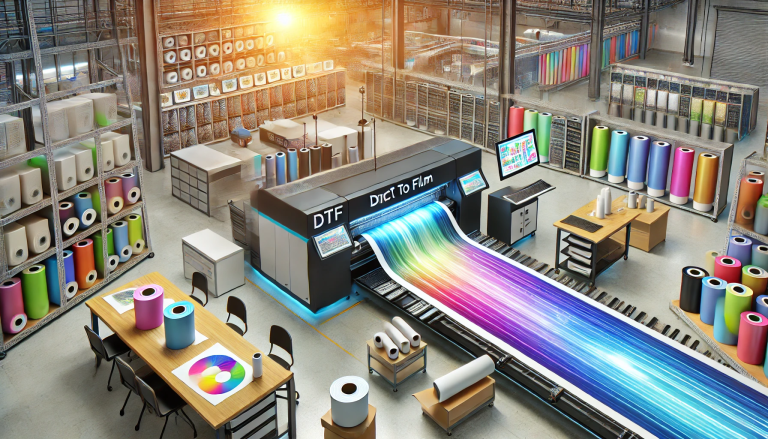“Direct to Film (DTF) Printing: Pros and Cons” -MAXDTF- UV DTF Transfer AB Decal Factory, UV DTF Transfer AB Paper Manufacturer, Made in China
Direct to Film (DTF) printing is an emerging technology in the world of apparel and textile printing. As its name suggests, DTF involves printing directly onto a special film, which is then transferred to a fabric using heat and pressure. But, like all technologies, DTF comes with its own set of advantages and disadvantages. In this article, we’ll dive deep into the pros and cons of Direct to Film printing to help you decide if it’s right for your printing needs.
Pros of Direct to Film Printing:
- Versatile Design Options: One of the standout advantages of DTF is the ability to reproduce highly detailed designs and vibrant colors. This is particularly beneficial for intricate graphics, photographs, and designs with gradients.
- Compatibility with Various Fabrics: DTF printing works on a wide range of fabrics, including cotton, polyester, and blends. This makes it a flexible option for different apparel items.
- Eco-friendly Ink: The inks used in DTF printing are often water-based, making them more eco-friendly compared to solvent-based inks used in other printing techniques.
- Durability: Designs printed using DTF are known for their longevity. They resist fading and can withstand numerous wash cycles without significant degradation.
- No Pre-treatment Needed for Dark Fabrics: Unlike Direct to Garment (DTG) printing, DTF does not always require a pre-treatment process when printing on dark fabrics. This can save time and reduce production costs.
- Scalability: DTF is well-suited for both short-run and large-scale productions, making it a versatile choice for businesses of all sizes.
Cons of Direct to Film Printing:
- Equipment Costs: Initial investment for a DTF printer can be relatively high, especially for startups or small businesses.
- Consumable Costs: While the inks might be eco-friendly, they can also be pricier compared to other printing inks. Plus, you have the additional cost of the transfer film.
- Slight Learning Curve: For those accustomed to traditional screen printing or even DTG, there might be a learning curve to understand the nuances of DTF printing.
- Transfer Process: Unlike DTG, which prints directly onto the fabric, DTF requires an additional step to transfer the design from the film to the garment. This can add to production times.
- Feel of the Print: Some users find that DTF prints can have a slightly different hand-feel compared to other printing methods, which might not be preferable for everyone.
- Maintenance: DTF printers, like all sophisticated machines, require regular maintenance to ensure they run efficiently and produce high-quality prints. Neglecting this can result in downtimes and increased operational costs.
Conclusion:
Direct to Film printing offers a unique blend of versatility, quality, and efficiency. While it comes with its set of challenges, the advantages might outweigh the disadvantages for many businesses, especially those looking for vibrant, detailed designs on a range of fabrics. As with any printing method, it’s essential to assess your specific needs, budget, and desired output before diving in.




